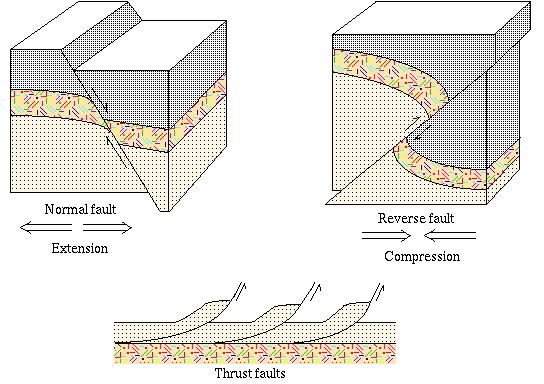

A fault is a discontinuity in a rock mass; locally it can be seen as a plane. It is along this surface that stresses buily up in the earth's crust are relieved by the motion of the two bodies of rock with respect to each other, i.e. an earthquake. The names for the two blocks are derived from old mining nomenclature. The block on top along the fault is known as the hanging wall; the block on the bottom is called the footwall.
In a normal fault, the stress is caused by stretching or extension of the earth's crust. In this case the hanging wall moves downward with respect to the footwall. This is the way most of the mountain ranges have been formed.
A reverse fault is caused by compression of the earth's crust. In this case, the footwall moves down with respect to the hanging wall.
Thrust faults are also activated by compression of the earth's crust. However, in this case, only the relatively thin upper layers take part in the motion. In the case of the overthrust belt in western Wyoming, the first thrust fault developed was the westernmost. Succeeding faults developed to the east. It is usually the case that the thrust faults converge into a single fault at deeper layers.